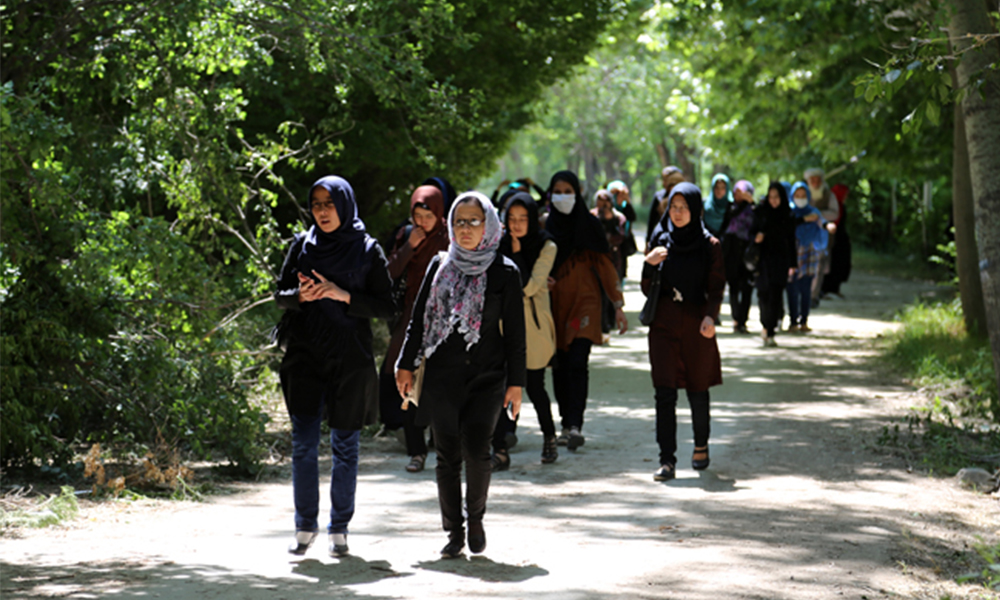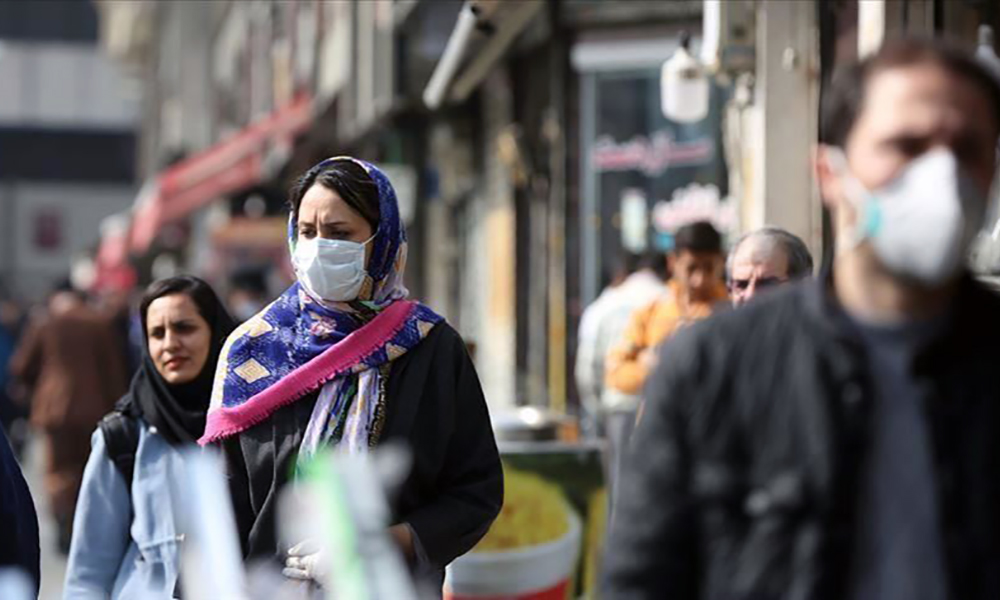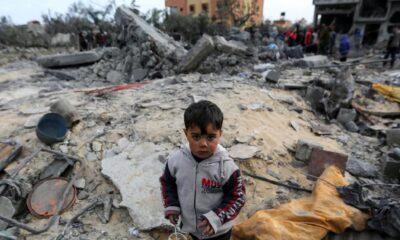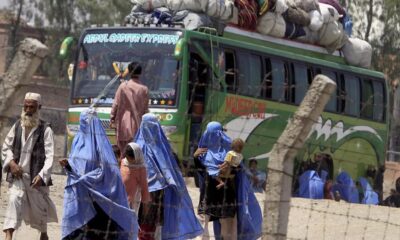COVID-19
Education centers in Afghanistan closed amid surge in COVID-19 cases

The Ministry of Public Health (MoPH) of Afghanistan on Saturday announced that schools and universities in 16 provinces will remain closed for two weeks to contain the spread of the third wave of COVID-19.
The Ministry said that public and private schools, universities, and training centers will remain closed in Kabul, Ghazni, Helmand, Kandahar, Logar, Nangarhar, Paktia, Parwan, Maidan Wardak, Panjshir, Balkh, Laghman, Badakhshan, Kapisa, Kunduz, and Nimroz provinces.
This comes as 20 people have died of the coronavirus in the last 24 hours in the country, the Ministry stated.
According to the Ministry’s daily statistics, 654 new infections have been recorded during this period.
The total number of people infected people with the coronavirus has risen to 70761 of which 2919 have died and another 57281 have been recovered.
Meanwhile, in a joint press conference the ministry of health, higher education, and ministry of education called on the people to adhere to the health instructions.
Majroh warned that if people do not cooperate, “we have to change all the houses to beds (isolation ward) and all the people will be affected by the virus,” said Wahid Majroh, Health Minister.
“We can manage to deal with the third wave of coronavirus if people give a hand,” he said.
Acting Minister of Education Rangina Hamidi hopes the situation gets better in the next two weeks and that “we will be able to resume schools and students and teachers in provinces where the education process is normal are required to follow the health instructions recommended by the Health Ministry.”
Abas Basir, Minister of Higher Education stated that following the decision of the Committee to Fight Coronavirus, all public and private universities in 16 provinces of the country have been closed for two weeks.
COVID-19
WHO declares end to COVID global health emergency

The World Health Organization said Friday that COVID-19 no longer qualifies as a global emergency, marking a symbolic end to the devastating coronavirus pandemic that triggered once-unthinkable lockdowns, upended economies and killed millions of people worldwide.
The announcement, made more than three years after WHO declared the coronavirus an international crisis, offers some relief, if not an ending, to a pandemic that stirred fear and suspicion, hand-wringing and finger-pointing across the globe, AP reported.
The U.N. health agency’s officials said that even though the emergency phase was over, the pandemic hasn’t finished, noting recent spikes in cases in Southeast Asia and the Middle East.
WHO says thousands of people are still dying from the virus every week, and millions of others are suffering from debilitating, long-term effects.
“It’s with great hope that I declare COVID-19 over as a global health emergency,” WHO Director-General Tedros Adhanom Ghebreyesus said.
“That does not mean COVID-19 is over as a global health threat,” he said, warning that new variants could yet emerge. Tedros noted that while the official COVID-19 death toll was 7 million, the real figure was estimated to be at least 20 million.
Tedros said the pandemic had been on a downward trend for more than a year, acknowledging that most countries have already returned to life before COVID-19.
He bemoaned the damage that COVID-19 had done to the global community, saying the pandemic had shattered businesses, exacerbated political divisions, led to the spread of misinformation and plunged millions into poverty.
When the U.N. health agency first declared the coronavirus to be an international crisis on Jan. 30, 2020, it hadn’t yet been named COVID-19 and there were no major outbreaks beyond China.
More than three years later, the virus has caused an estimated 764 million cases globally and about 5 billion people have received at least one dose of vaccine.
In the U.S., the public health emergency declaration made regarding COVID-19 is set to expire on May 11, when wide-ranging measures to support the pandemic response, including vaccine mandates, will end. Many other countries, including Germany, France and Britain, dropped most of their provisions against the pandemic last year.
When Tedros declared COVID-19 to be an emergency in 2020, he said his greatest fear was the virus’ potential to spread in countries with weak health systems.
Most recently, WHO has struggled to investigate the origins of the coronavirus, a challenging scientific endeavor that has also become politically fraught.
COVID-19
COVID-19 in Iran: Nearly 900 new cases, 24 deaths recorded

The Iranian health ministry announced on Sunday that more than 890 new cases of COVID-19 have been identified across the country during the past 24 hours, adding that 24 patients have died in the same period of time, Fars News Agency reported.
“A sum of 891 new patients infected with COVID-19 have been identified in the country based on confirmed diagnosis criteria during the past 24 hours,” the Iranian Health Ministry’s Public Relations Center said on Sunday, adding, “454 patients have been hospitalized during the same time span.”
The ministry’s public relations center said 611 people infected with COVID-19 are in critical condition.
COVID-19
China says 200 million treated, pandemic ‘decisively’ beaten

China says more than 200 million of its citizens have been diagnosed and treated for COVID-19 since it lifted strict containment measures beginning in November.
With 800,000 of the most critically ill patients having recovered, China has “decisively beaten” the pandemic, according to notes from a meeting of the ruling Communist Party’s all-powerful Politburo Standing Committee presided over by President and party leader Xi Jinping, AP reported.
China enforced some of the world’s most draconian lockdowns, quarantines and travel restrictions and still faces questions about the origins of the virus that was first detected in the central Chinese city of Wuhan in late 2019. Heavy-handed enforcement prompted rare anti-government protests and took a heavy toll on the world’s second-largest economy.
The official Xinhua News Agency quoted Xi as saying that policies to control the outbreak had been “entirely correct.” The abrupt lifting in November and December of the “zero COVID” policy that had sought to eliminate all cases of the virus led to a surge in infections that temporarily overwhelmed hospitals.
Case numbers have since peaked and life has largely returned to normal, although international travel in and out of China has yet to return to pre-pandemic levels.
China is now transitioning to a post-pandemic stage after a fight against the outbreak that was “extraordinary in the extreme,” Xinhua said.
The government will continue to “optimize and adjust prevention and control policies and measures according to the times and situations with a strong historical responsibility and strong strategic determination,” Xinhua said.
-

 Latest News5 days ago
Latest News5 days agoAfghan prisoners in Iran sent home
-

 Latest News5 days ago
Latest News5 days agoAfghanistan ranks last in World Happiness Report
-

 Regional5 days ago
Regional5 days agoMacron and Saudi Crown Prince discuss Gaza, Ukraine peace process
-

 World5 days ago
World5 days agoTrump, Zelenskiy pledge in phone call to work for end to war in Ukraine
-

 Latest News4 days ago
Latest News4 days agoPakistan once again urges IEA to act against militants
-

 Latest News5 days ago
Latest News5 days agoKhyber Pakhtunkhwa chief minister opposes military operations in the province
-

 Regional4 days ago
Regional4 days agoAt least 91 killed in Gaza as Israel abandons ceasefire, orders evacuations
-

 Sport3 days ago
Sport3 days agoAFC Beach Soccer: UAE thrash Afghanistan 7-1 in opener
























